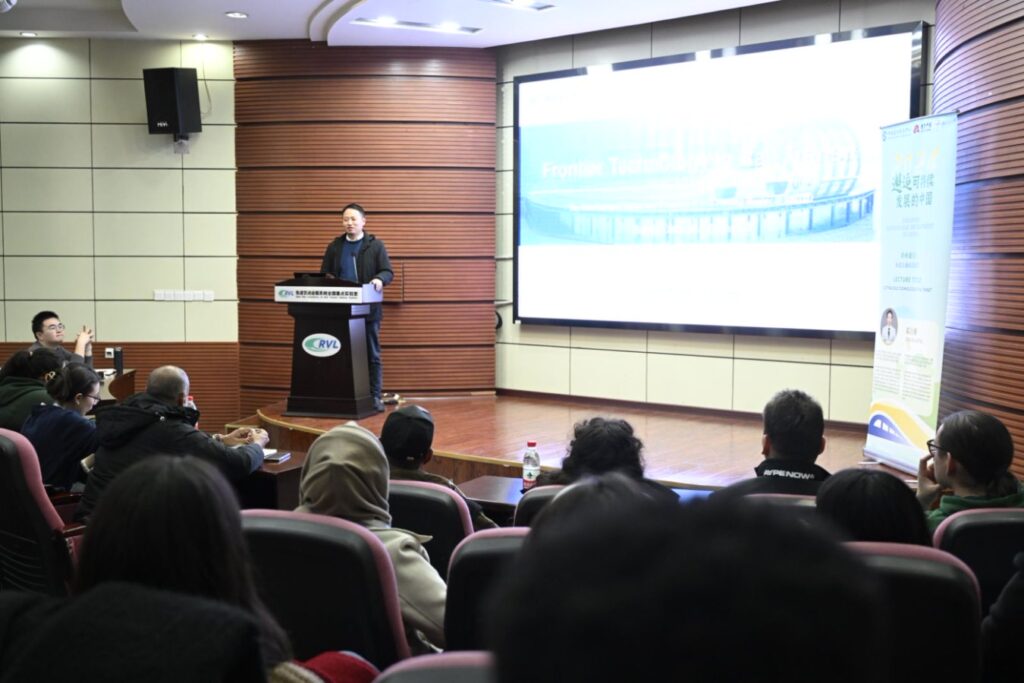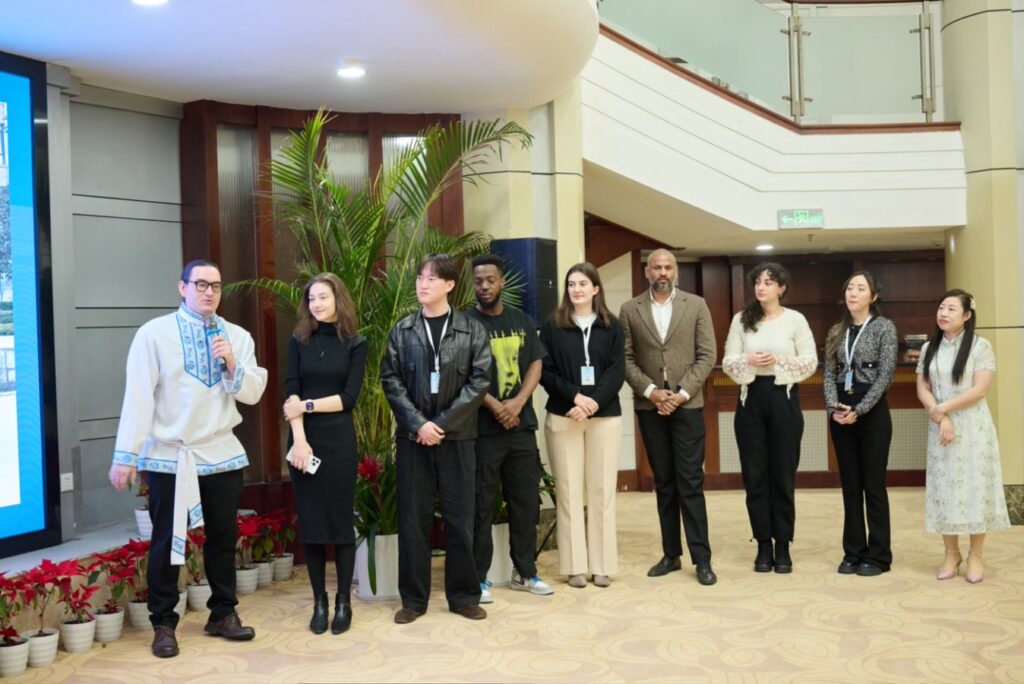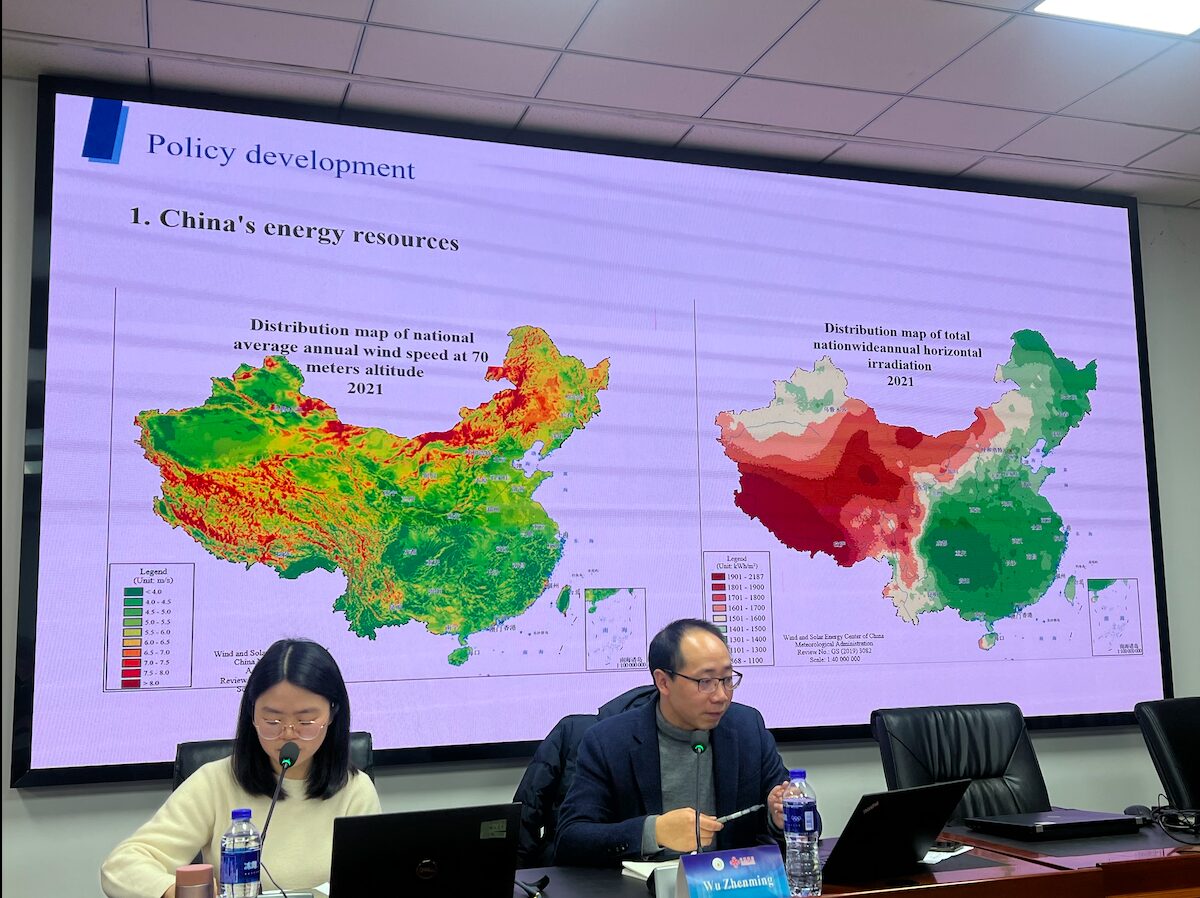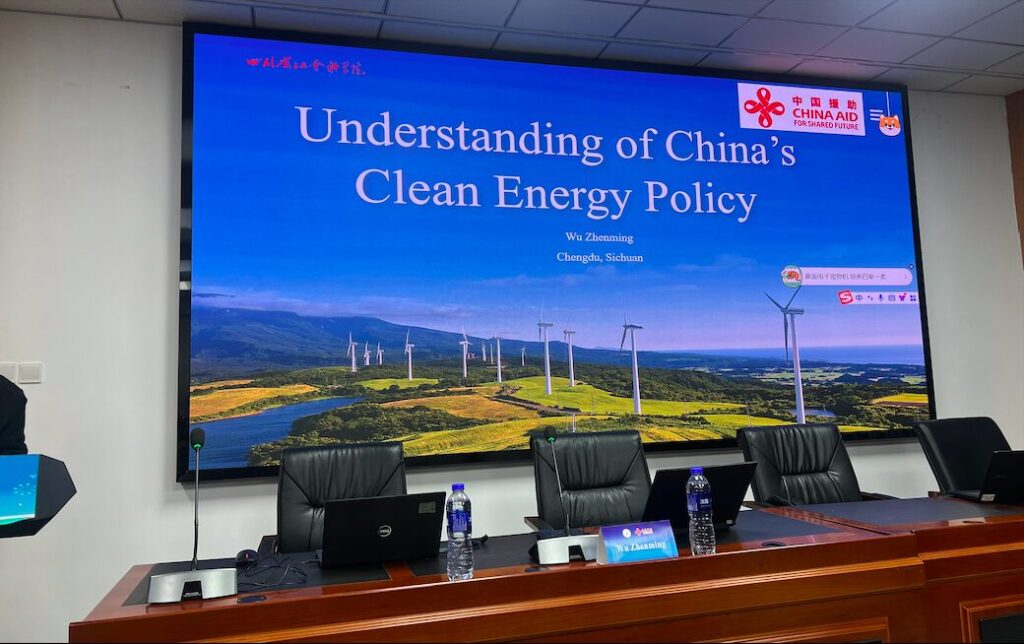China's Dual Carbon Strategy: A Unique Model for Global Climate Cooperation
On December 24, 30 international students from 19 top universities across China, representing 25 countries—including the United States, Britain, France, Sri Lanka, Bangladesh, Kazakhstan, Russia, Benin, Malaysia, Indonesia, Vietnam, El Salvador, Zimbabwe, Pakistan, Yemen, Iran, Turkey, Tunisia, Seychelles, Uganda, Algeria, Turkmenistan and South Korea—gathered in Chengdu for a study tour on China’s sustainable development. The event, “Encountering a Sustainable China,” was organized by the Ministry of Education (China) Study Abroad Service Center and hosted by Southwest Jiaotong University. During the tour, students explored China’s green transportation, animal protection, ecological water conservancy, and clean energy initiatives, learning firsthand about China’s approach to achieving sustainability and carbon neutrality.




Highlights of the Study Tour
The first stop on the tour featured a visit to the National Key Laboratory of the Southwest Transportation University Rail Transit Carrier System, where students experienced China’s cutting-edge high-speed magnetic floating train technology. They learned how this innovation in rail transit—emphasizing low cost, energy efficiency, and minimal energy consumption—plays a role in China’s green development strategy.
Later, at Chengdu Yunda Technology Co., Ltd., students gained insights into China’s high-speed rail systems through simulations and exhibitions, reflecting on China’s role in sustainable transportation and its ambitious carbon neutrality goals for 2060.
On the final day, the group visited the Chengdu Biogas Science Research Institute and attended a lecture on China’s new energy strategy by Prof. Wu Zheming. He discussed the nation’s energy policies, including China’s heavy reliance on coal (accounting for 60% of energy needs), and how the Dual Carbon Strategy balances this reality with its transition to renewable energy.



The Dual Carbon Strategy: China’s Vision for Sustainability
In 2020, Chinese President Xi Jinping unveiled the Dual Carbon Strategy, setting two ambitious climate goals:
- Peak carbon emissions by 2030.
- Achieve carbon neutrality by 2060.
These commitments marked a significant pivot in China’s approach to both its development and environmental stewardship. As the world’s largest emitter of CO2, China’s strategy is not only critical to its own sustainability but also serves as a cornerstone in global climate governance. The Dual Carbon Strategy emphasizes balancing economic growth with environmental responsibility, demonstrating that it is possible to advance industrialization while reducing carbon emissions—a model that developing countries can look to as they tackle similar challenges.
Core Elements Of The Dual Carbon Strategy
1. Transition to Renewable Energy
China’s strategy calls for a massive shift toward renewable energy, with specific targets for solar, wind, and other non-fossil fuel sources.
- By 2030, China aims for 25% of its energy to come from non-fossil fuel sources.
- Wind and solar power will be key components, with China having already become the world leader in solar energy production and installation.
- China is also increasing its nuclear energy capacity as part of its non-fossil energy portfolio.
2. Carbon Intensity Reduction
A central component of the strategy is reducing carbon intensity, which measures carbon emissions per unit of GDP.
- By 2030, China aims to lower its carbon intensity by 18% compared to 2020 levels. This target not only reflects a move towards greener energy but also an increase in energy efficiency across various sectors, including industry, transportation, and construction.
3. Energy Efficiency and Technological Innovation
The strategy places a significant emphasis on technological innovation, particularly in sectors such as:
- Electric Vehicles (EVs): China has become a global leader in EV manufacturing and infrastructure, with a focus on reducing emissions from the transport sector.
- Green Hydrogen: Hydrogen is seen as a key alternative energy source, especially for hard-to-decarbonize industries like steel and chemicals.
- Carbon Capture and Storage (CCS): Technologies that capture CO2 emissions from industrial processes and store them underground are a critical part of China’s plan to reduce emissions from sectors like cement and steel production.
4. Carbon Trading and Market Mechanisms
In 2021, China launched a national carbon market, which is the largest of its kind in the world. The market primarily covers the power generation sector, but future plans include expanding to other industries.
- Carbon trading provides financial incentives for companies to reduce emissions by allowing them to buy and sell carbon allowances.
- The goal is to establish a market-driven mechanism that encourages emissions reductions across sectors and helps China meet its long-term carbon neutrality goals.
5. Carbon Sinks and Reforestation
One of the most innovative aspects of the strategy is the development of carbon sinks, which include large-scale reforestation and afforestation projects.
- China has initiated some of the largest tree planting programs in the world, covering millions of hectares of land.
- Reforestation not only absorbs CO2 but also contributes to biodiversity and ecosystem restoration, addressing other environmental challenges.
6. Industrial and Urban Transformation
- Low-carbon cities: China is developing eco-cities that incorporate green building technologies, energy-efficient infrastructure, and sustainable public transportation.
- Circular economy: A focus on reducing waste, improving recycling systems, and promoting resource efficiency helps cut emissions across industries.
7. Coal Phase-Out and Energy Transition
China remains heavily reliant on coal for its energy needs (60% of energy consumption), which poses a significant challenge for the transition to a low-carbon economy.
- However, China is committed to reducing its reliance on coal over time by increasing the share of renewables in the energy mix, promoting cleaner coal technologies, and diversifying its energy sources.
- Peak coal consumption is expected before 2030, with an eventual transition toward cleaner energy alternatives.
China’s Role in Global Climate Leadership
China’s Dual Carbon Strategy places it at the forefront of the global push for climate action. While China’s emissions are still rising, the nation is making significant strides to curb them and lead by example. China’s long-term vision of carbon neutrality by 2060 is now a central pillar in the global fight against climate change.
The strategy not only sets ambitious domestic goals but also positions China as a key advocate for multilateral cooperation in addressing global environmental challenges. Through platforms like the Paris Agreement, China is working to ensure that developing nations receive the financial and technological support they need to pursue their own climate goals.
China’s Strategy as a Model for the Global South
The Dual Carbon Strategy has wide-reaching implications, particularly for other developing nations facing similar challenges of balancing economic growth with environmental sustainability. Countries like India, Brazil, and South Africa can draw valuable lessons from China’s approach, particularly its emphasis on renewable energy and carbon sinks.
- India has significant solar and wind energy potential, which it can harness to reduce its dependence on coal.
- Brazil’s vast rainforests can play a crucial role in offsetting carbon emissions through reforestation and sustainable land use.
- South Africa can take inspiration from China’s efforts to reduce coal reliance and invest in green energy technologies.
Prof. Wu Zheming’s Insights

During the study tour, Prof. Wu Zheming discussed the rationale behind China’s Dual Carbon Strategy, explaining that while China has large reserves of coal, oil, and natural gas, it also has abundant renewable energy resources, including hydroelectric and solar power. This mix allows China to gradually reduce its coal dependency while investing in renewable energy to meet future demand. Prof. Wu also emphasized that China’s carbon neutrality commitment is not a hard law but a strategic direction, signaling to businesses and the global community the country’s intent to transition to a greener economy.
China’s Dual Carbon Strategy not only outlines a path toward domestic sustainability but also offers a comprehensive model for global cooperation in climate action. By focusing on technological innovation, carbon trading, and renewable energy development, China provides a roadmap for other developing nations to follow.
The future of global climate action will require collaboration between developed and developing nations. China’s Dual Carbon Strategy exemplifies how multilateralism can play a crucial role in achieving carbon neutrality and sustainable development. Through ongoing international partnerships, knowledge-sharing, and financial support, the Global South can become a key player in the global effort to combat climate change and build a sustainable future for all.


